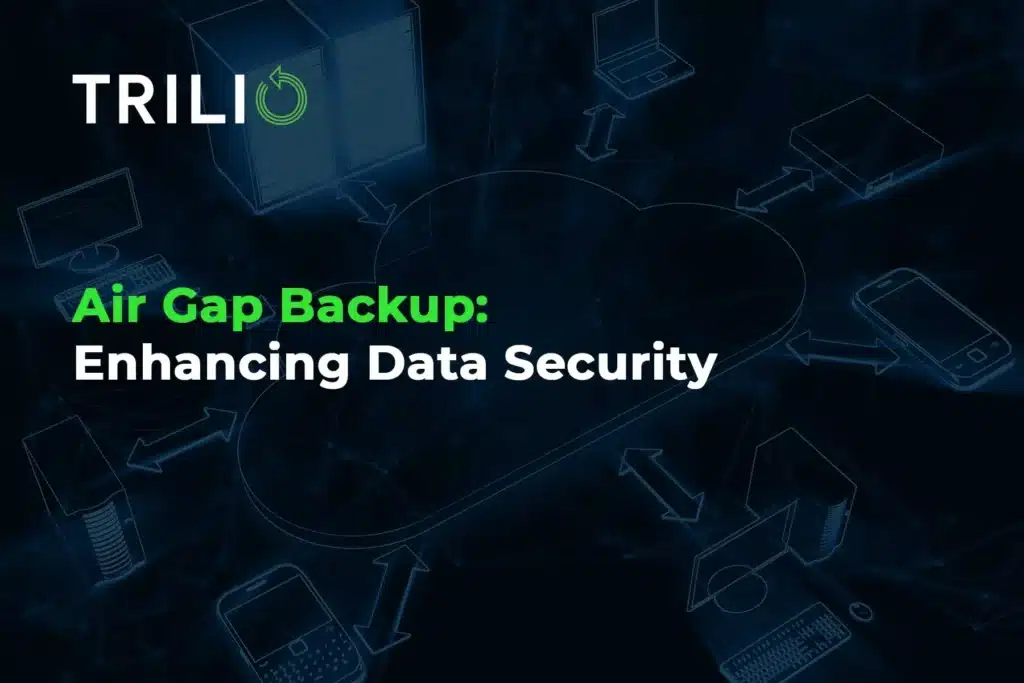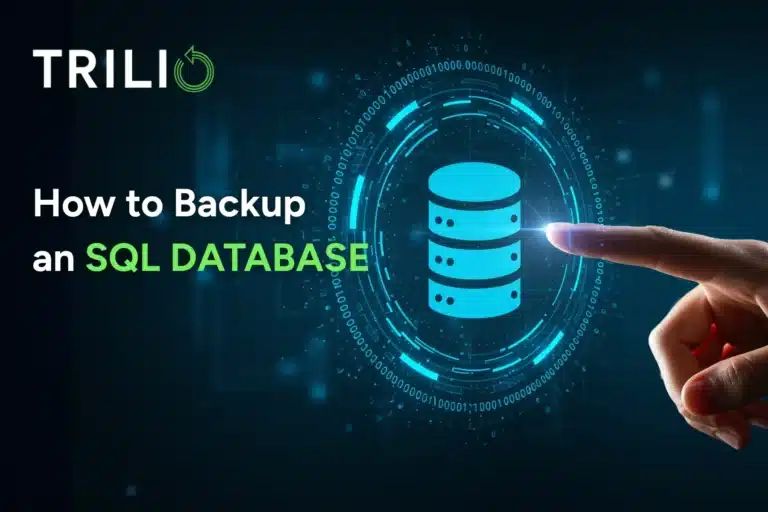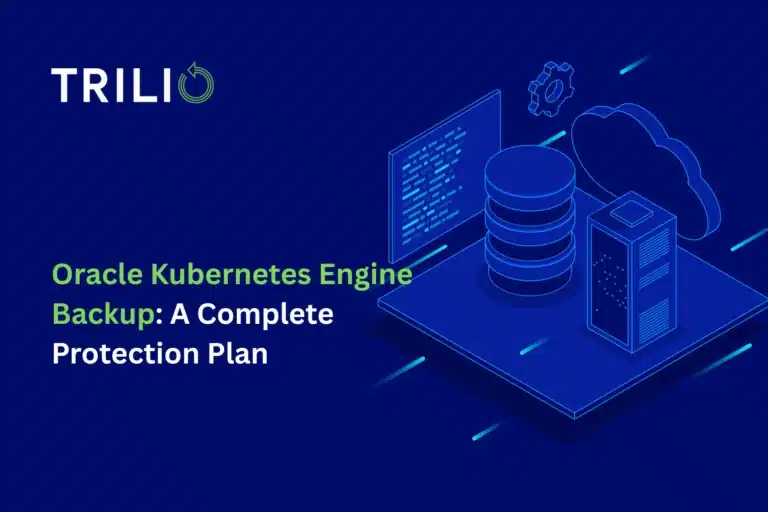As cyber threats grow more complex, companies increasingly look for strong methods to protect their valuable information. Air gap backup has become an effective approach to improve data security and shield against various risks. This technique creates a separation between main data storage and backup systems, either physically or logically, which greatly reduces the chances of unauthorized access or data corruption.
This article examines the fundamental concepts behind air gap backup, discusses ways to implement it, and highlights the considerable benefits it provides to enterprises seeking to safeguard their critical data assets.
Understanding Air Gap Backup
Air gap backup creates a critical separation between primary storage systems and backup repositories, providing enhanced security against various digital threats.
What Is Air Gap Backup?
Air gap backup creates a physical or logical separation between primary data storage and backup systems called an “air gap” that effectively isolates backup data from potential network-based attacks. The concept takes inspiration from traditional offline backup methods but adapts them to suit the needs of contemporary IT infrastructures. By establishing a disconnection in this way, companies can substantially reduce the risk of unauthorized access, malware infections, and data corruption that could simultaneously compromise both primary and backup data.
The Importance of Air Gaps in Data Protection
The value of air gap backup lies in its capacity to provide an extra layer of defense against sophisticated cyber threats. By creating a barrier between primary and backup systems, organizations can greatly reduce the risk of data loss or corruption due to ransomware attacks, malicious insider activities, or accidental deletion.
The air gap approach ensures that even if the primary network is compromised, the backup data remains secure and recoverable. The air gap functions as a crucial safeguard, allowing businesses to maintain data integrity and quickly restore operations should a security incident or system failure occur.
Benefits of Air Gap Backup for Enterprises
Enhanced Protection Against Cyber Threats
By creating a physical or logical separation between backup data and primary systems, companies establish a substantial barrier against malicious attacks, including malware and ransomware. This separation ensures that backup data remains secure and recoverable, even if primary systems are compromised.
For example, during a ransomware attack, air-gapped backups offer a clean, uninfected copy of data, enabling businesses to restore their operations without paying ransoms or losing essential information. This approach significantly reduces the risk of data loss and helps maintain operational continuity in the face of cyber threats.
Improved Data Recovery and Business Continuity
A major benefit of air gap backup is its capacity to support quick and reliable data recovery, which is essential for maintaining business continuity. When faced with system failures, data corruption, or cyber attacks, organizations can swiftly restore their operations using isolated backup data. This capability minimizes downtime and reduces the associated costs.
In addition, air gap backup offers greater assurance of the integrity of backup data because it’s less susceptible to tampering or corruption. This confidence is particularly valuable for businesses that depend heavily on data-driven operations and cannot tolerate extended periods of downtime.
Regulatory Compliance and Data Governance
Many industries must adhere to strict regulatory requirements regarding data protection and retention. Air gap backup assists organizations in meeting these compliance standards by offering a secure and isolated storage environment for sensitive information. This approach aligns with data governance best practices, ensuring that critical data is safeguarded, preserved, and easily retrievable when necessary.
Adopting air gap backup strategies lets companies demonstrate their dedication to data security and compliance, potentially avoiding the expensive fines and reputation damage associated with data breaches or noncompliance. This approach also helps businesses maintain the trust of their customers and partners by showing a commitment to protecting sensitive information.

Automated Kubernetes Data Protection & Intelligent Recovery
Perform secure application-centric backups of containers, VMs, helm & operators
Use pre-staged snapshots to instantly test, transform, and restore during recovery
Scale with fully automated policy-driven backup-and-restore workflows
Best Practices for Air Gap Backup Implementation
To get the most out of air gap backup, organizations should follow several key practices:
- Regularly test backup and recovery processes to ensure data integrity and system reliability.
- Implement robust access controls and encryption for both primary and backup data, which significantly enhances security.
- Keep multiple backup copies, including at least one offsite, to protect against physical threats.
- Strike a balance between security and operational efficiency by automating the backup process while maintaining the air gap. This helps organizations maintain strong data protection without sacrificing too much convenience.
Cloud-Native Air Gap Backup Technologies
Companies are increasingly moving their operations to the cloud, and air gap backup solutions have adapted to meet these new requirements. Cloud-native air gap backup technologies take advantage of the scalability and flexibility offered by cloud platforms while maintaining the security benefits associated with traditional air gap methods. These solutions typically employ immutable storage, versioning, and multi-factor authentication to create logical separations between primary and backup data.
Trilio's Approach to Air Gap Backup for Kubernetes
Trilio for Kubernetes offers quick and straightforward backup of application containers and virtual machines, which tackles the unique challenges of safeguarding data in dynamic, containerized settings. Trilio’s solution generates point-in-time backups that can be stored in a separate, air-gapped location, ensuring that critical application data remains secure and recoverable.
By seamlessly integrating with Kubernetes, Trilio allows organizations to implement air gap backup strategies without disrupting their existing workflows or sacrificing the agility of their container-based applications. Schedule a demo to learn more about how Trilio can enhance your organization’s security.
Conclusion: Securing Your Data with Air Gap Backup
Air gap backup provides a strong defense against the increasing number of cyber threats, giving businesses a reliable way to protect their essential data. By physically or logically separating primary and backup systems, companies can greatly reduce their risk of falling victim to ransomware, malware, and other harmful attacks. This method not only improves data protection but also helps organizations recover quickly if their systems fail or come under attack. Air gap backup offers a thorough solution to many of the data security issues that modern companies face, from complying with regulations to keeping business running smoothly.
Air gap backup solutions will continue to develop as technology advances, adapting to new threats and working with new technologies such as artificial intelligence and machine learning. Companies looking to improve their data protection measures should consider air gap backup options for better security. Schedule a demo to learn how advanced air gap backup solutions can protect your company’s valuable data and give you peace of mind as digital environments become more complex.
FAQs
How often should I perform air gap backups?
The right frequency of air gap backups depends on your organization’s specific needs and risk tolerance. Most experts suggest performing air gap backups at least weekly for critical data, though some businesses may choose daily or even more frequent backups.
When deciding on your backup schedule, it’s important to consider factors like how quickly your data changes, how fast you need to recover, and what impact data loss could have on your operations. It’s also crucial to regularly test your air gap backup system to make sure it’s working properly and can be relied upon when needed.
Can air gap backups be automated?
Air gap backups can be partially automated. Many current air gap backup systems offer features that let you schedule regular, automatic backups. However, effective air gap protection often requires some manual steps, such as physically unplugging storage devices or manually approving network connections.
The key is to find a good balance between automation and hands-on management. This approach helps maintain the security advantages of air gap backups while keeping the extra work to a minimum.
Are air gap backups compatible with cloud storage?
Yes, air gap backups can work with cloud storage, but it requires careful planning. Cloud-based air gap solutions typically use logical separation instead of physical disconnection, which can be accomplished through methods like immutable storage, versioning, and strict access controls.
Some organizations prefer a mixed approach, using both on-site air gap backups and cloud storage for extra protection. If you’re thinking about using cloud storage for air gap backups, it’s important to pick a provider with strong security measures and the right certifications.
How do air gap backups differ from traditional backup methods?
Air gap backups offer an extra layer of security compared to traditional backup methods by creating a physical or logical separation between your main systems and your backups that protects your backup data from threats that might affect your primary network. While traditional backups are still valuable, they often stay connected to the main system, which can leave them open to the same attacks or problems.
What are the potential drawbacks of implementing air gap backups?
Although air gap backups provide significant security benefits, they can come with some challenges. The main issue is often the increased complexity of backup and recovery processes, which might lead to longer recovery times compared to always-connected backup solutions.
Setting up air gap backups might also require extra hardware, software, or staff, which can increase costs. Some organizations might find it tricky to balance the strict separation needed for effective air gap protection with the need for quick data access and recovery.
Despite these potential drawbacks, however, many businesses find that the enhanced security and peace of mind provided by air gap backups make them worth the investment.




